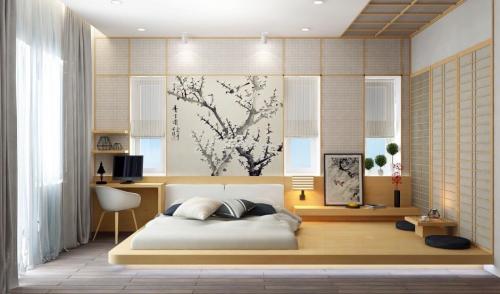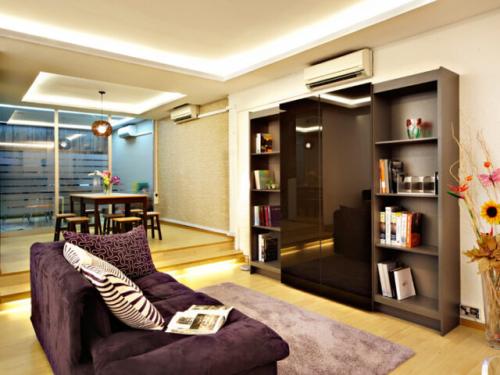Tips for Transform Your Home with Japandi Interior Design

Japandi interior design blends the serene elegance of Japanese aesthetics with the minimalist charm of Scandinavian style. This design philosophy focuses on simplicity, functionality, and natural beauty, creating spaces that are both calming and efficient. If you're considering transforming your home with Japandi interior design, here are some essential tips to guide you through the process.
1. Understanding Japandi Interior Design
Japandi interior design is a harmonious fusion of Japanese and Scandinavian styles. Japanese design emphasizes minimalism, clean lines, and a strong connection to nature, while Scandinavian design incorporates functionality and simplicity. The result is a style that promotes tranquility and practicality, making it perfect for creating serene home environments.
2. Color Palette and Materials
To achieve the true essence of Japandi interior design, choose a color palette that features neutral tones and earthy hues. Think soft beiges, warm greys, and muted greens. For materials, focus on natural elements such as wood, bamboo, and linen. These materials not only enhance the aesthetic but also contribute to the functionality and comfort of your space.
3. Furniture and Layout
In Japandi interior design, furniture should be simple yet functional. Opt for pieces that have clean lines and minimal ornamentation. Scandinavian-inspired furniture often features light-colored wood and sleek shapes, while Japanese furniture tends to be low to the ground, promoting a sense of balance and calm. Arrange your furniture to create a harmonious layout, ensuring that the space feels open and uncluttered.
4. Decor and Accessories
When it comes to decor in Japandi interior design, less is more. Choose minimalist decor items such as elegant vases, understated art pieces, and textured textiles. Incorporate accents from both Japanese and Scandinavian traditions, such as handmade ceramics or natural woven baskets. The goal is to enhance the space without overwhelming it, maintaining the serene and functional essence of Japandi style.
5. Lighting and Ambiance
Lighting plays a crucial role in Japandi interior design. Select fixtures that complement the minimalist aesthetic while providing ample light. Paper lanterns, simple pendant lights, and warm LED bulbs work well to create a cozy and inviting atmosphere. Proper lighting helps in setting the right mood and accentuating the natural beauty of your Japandi-themed space.
6. Incorporating Nature
Nature is a key element in Japandi interior design. Introduce indoor plants to bring a touch of the outdoors inside. Consider low-maintenance plants like succulents or bamboo, which align with the Japandi focus on simplicity and nature. Additionally, natural decor elements, such as wooden sculptures or stone accents, can further enhance the organic feel of your space.
7. Practical Tips for Implementation
Transforming your home with Japandi interior design doesn’t have to be expensive. Start by decluttering and simplifying your space to create a foundation for Japandi style. Invest in a few key pieces that embody the Japandi ethos, and consider DIY projects to personalize your space. If you're seeking professional assistance, BanYew offers expert guidance in achieving the perfect Japandi look.
Conclusion
Embracing Japandi interior design can transform your home into a serene and functional sanctuary. By focusing on a harmonious color palette, selecting the right furniture, and incorporating natural elements, you can create a space that embodies the best of both Japanese and Scandinavian styles. For expert advice and design services, BanYew is here to help you realize your Japandi interior design dreams.



Comments